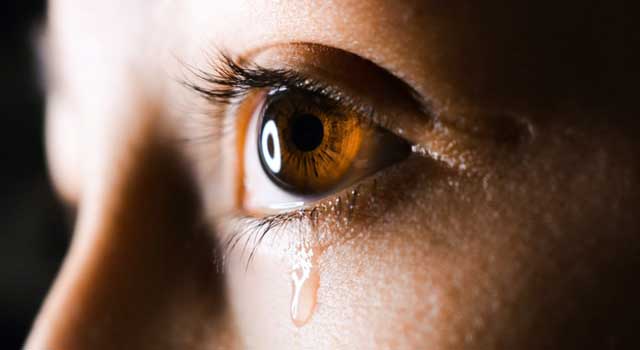
Tears literally enable us to see. They lubricate our eyeballs and eyelids, thus preventing our eyes from dehydrating. They also provide a smooth surface for refracting light, supply oxygen, and are a vital component of the ocular defense system that protects against a range of pathogens. Below we’ll delve into the composition and types of tears, and further explain why they are so beneficial to our physical and emotional well-being.
Structure of Tears
Tears are made up of three layers: lipids, aqueous and mucous.
The lipid layer is the outermost layer and prevents the evaporation of tears. The lipids are produced by tiny glands in the eyelids called the meibomian glands.
The aqueous layer, which is the middle layer, makes up 95% of our tears. This layer supplies nutrients to the cornea, prevents infection, and heals ocular damage. This layer is effectively made up of water and is produced by the lacrimal gland.
The mucous layer is the one closest to the eye. It coats the cornea and provides a level platform that allows for an even distribution of the tear film over the eye. This layer is produced by even smaller glands called goblet cells.
The Three Types of Tears
Tears are composed of water, salts, amino acids, antibodies and lysozymes (antibacterial enzymes). However, there are several types of tears, and their composition varies. For example, the tears we shed while crying are different from the tears that flood our eyes in the presence of irritants like onions, dust or allergies.
Humans produce the following three kinds of tears:
- Basal – these tears are constantly at the front of the eyeball and form the liquid layer over the eyeball to keep it lubricated.
- Reflex – these tears appear when the eye is irritated, such as when the eyes feel gritty or when we get dust, sand or other small foreign objects in our eyes.
- Psychogenic – these tears are sparked by emotion. They possess a higher protein level than basal and reflex tears, which makes them thicker, causing them to stream more slowly. Psychogenic tears are made up of higher concentrations of stress hormones such as adrenocorticotropic hormone and leucine enkephalin (a natural painkiller). This suggests that emotional tears play an important role in balancing stress hormone levels.
Tears Serve the Following Functions
Prevent dryness
Tears prevent dryness by lubricating the surface of the eye. Each time we blink we spread this cushioning layer of tears across the front of the eyes.
Supply oxygen and nutrients
Oxygen and nutrients are delivered to the cornea through our tears.
Prevent infection
Not only do tears wash away foreign bodies that enter the eye, but they can also prevent infection thanks to an antibacterial property contained within tears called lysozyme. This antibacterial agent fights off the germs we pick up in our surroundings.
Heal ocular damage
Tears are made up of substances that heal damage to the surface of the eye. Damage can be caused by foreign objects and even high exposure to UV rays.
Create a smooth surface on the eye
Tears lubricate and smooth our eye’s surface, leading light to be correctly focused and enabling us to see clearly.
Remove Toxins
Emotional tears contain more toxic byproducts than reflex tears (caused by irritation), and can thus flush out many toxins and stress hormones.
Dull pain and improve mood
Crying for extended periods of time releases oxytocin and endorphins. These feel-good hormones can help diminish both physical and emotional pain. Once the endorphins are released, your body may enter a more relaxed stage, with oxytocin providing you with a sense of calm and well-being.
As you can see, tears are invaluable for clear vision, protecting your eyes, flushing out irritants, and soothing emotions.
If you feel that your eyes are not as comfortable or your vision is not as clear as usual, contact Dr. Carole Burns at Professional VisionCare in Lewis Center today.































